#indi acosta
Text
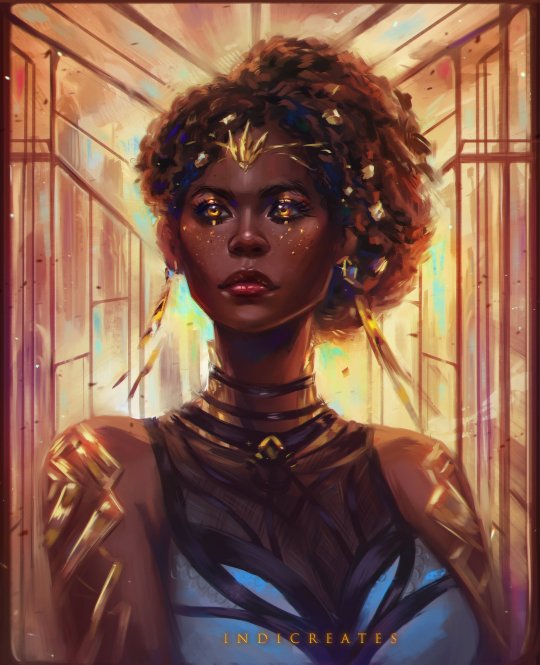
'Mel Medarda' by Indi Acosta.
#Art Of The Day#Art#AOTD#Indi Acosta#IndiCreates#Mel Medarda#Arcane#Female#Feminine#Portrait#Fan Art#Imaginative Realism
959 notes
·
View notes
Text
* ♡ ◞ open starter ╱ open to men & nb.

“ what, so you don’t even say goodbye anymore to the poor guys you’re screwing? ” words were prompted by the sight of roommate wandering outside of their bedroom, clearly still rubbing the sleep from his eyes. tone attempted to mask the bitter nature that hid behind them as lighthearted jest, and gaze averted to shield the look he could never hide. “ he left like half an hour ago, in case you're looking for him. ”
#* ♡ ◞ carlos acosta ╱ 𝒊𝒏𝒕𝒆𝒓𝒂𝒄𝒕𝒊𝒐𝒏𝒔 .#indie rp#indie bi rp#indie gay rp#indie starter#open starter#BASICALLY all you need to know is he's a himbo#based entirely off that one photoset of the question being like “whats the best love song of all time”#and this guy clearing his throat and singing replay by iyaz#that's it that is the whole inspo and that's all you gotta know#no brain cells to realize he's in love with the roommate
11 notes
·
View notes
Text
open to. m / f / nb.

"surprisingly, you're not as bad as everyone says you are."
8 notes
·
View notes
Text
open to ? all !
muse ? alexander, queer, 28-35 !
connection ? source.

❝ you know i could get them to leave you alone permanently right ? just tell me the world, please. they'll never bother you again. ❞
#indie oc rp#indie rp#indie bi rp#⟨ ♡ * 𝒔𝒑𝒆𝒂𝒌𝒔 . ⟩ ; alexander acosta#yes ANOTHER alex starter idgaf i wanna write him so bad abegg
5 notes
·
View notes
Audio
pop song, tani (2021).
you’re not the love of my life
but you’re close
#pop song#tani#mew#argentina#indiepop#indie pop#twee pop#jigsaw records#2021#sing a song#bedroom pop#piano!#diego acosta
8 notes
·
View notes
Photo

The Seven Faces of Jane (dir. Gillian Jacobs et al).
[It’s] an experimental anthology indie road film conceived by producer Roman Coppola as an “exquisite corpse” blind collaboration starring [...] Jacobs as the eponymous heroine [im] a surrealist vision of a woman tumbling through eight different strange mini-adventures.
#seven faces of jane#the seven faces of jane#gillian jacobs#roman coppola#indie film#indie movie#movie#movies#movie review#film#film review#cinema#gia coppola#alexandra cassavetes#ryan heffington#ken jeong#boma iluma#julian acosta#alex takacs#gravitas ventures#joel mchale
3 notes
·
View notes
Note
Hi lovely helpers. So I’m writing this family and I already have Allegra Acosta as the middle child. The thing is I am in need of help with an older sister around two or three years older and a mother in her early fifties if possible. Tysm!
as far as i know, allegra acosta is mexican so for an older sister, i would suggest karol sevilla (23), mia xitlali (23) or becky g (25). i would also suggest lizeth selene (23) who uses they/she pronouns and is genderfluid. for a mother, i would suggest julieta venegas (52) or constance marie (57). i hope this helps!
3 notes
·
View notes
Text
synopsis. linked in source.

“are you fucking kidding me?” fists bang furiously against the door now locked between them, a horrible mixture of anger and panic bubbling low in celine’s stomach. try as she may, it’s no use — thanks to her partner’s cowardly actions, there isn’t a single viable exit in sight and though it goes against every instinct she has, she slumps tiredly against the door and sinks to her knees in defeat. if nothing else, she hopes her inevitable death haunts him for the rest of his life.
5 notes
·
View notes
Text
OPEN TO : males.
PLOT : source link but yeah your typical bored trophy wife ://
CONNECTIONS : gardener / pool boy, neighbor, step - sons friend, anything tbh go crazy lol. they could’ve already been hooking up or this could b their first time :]

“ you know, carlos bought this as an apology for forgetting my birthday this year. “ fingers glide across marble table behind her, eyes never flickering away from the younger male in front of her. carmen leans her lower back against it, sitting on the edge as knees innocently part, coy attempt to have the hem of her black dress glide up her tanned thighs ― lacy panties in teasing view. head whips a little in order to move mousy hair from her face, lips tugging into a smile. “it costs him almost thirty thousand dollars.” black manicured nails tap against the hand carved material. “and i want you to f.ck me on it.”
#. ◞ ‧ ✨ : open. › ❪ carmen acosta. ❫#writing this made me cringe is2g i can not write suggestive starters LMAOO but yea..#indie rp#indie smut rp#ok now i do drafts <3
4 notes
·
View notes
Text
PINNED.

runnin' through this strange life / chasin' all them green lights
/ throwin' up the shade for a little bit of sunshine .& indie rp blog. 21+ only. mun is 25. she / her. muses are 21+. rules page under construction. rping on both tumblr and discord. enter at your own risk. oc and canon muses welcome.
rules (mobile rules under the cut). wanted plots. wanted opps. requestable fcs. plotting calls. memes. open starters. muse page (under construction)
don't be a jerk. you be nice, i'll be nice, we'll both be happy and can excitedly get down to business!!
21+ from this point forward (including muses & fcs). if you're younger than that, thanks for stopping by, don't pass go and don't let the door hit you on the way out (affectionately) babes.
typical triggering topics aren't written here. inc*st, stepc*st, nonc*n, ab*se/t*rture, bathroom stuff / watersports / petplay. beyond that it's pretty much free rein. also no phobes of any kind here, pls and thank you. we be respectful on this blog.
discord is available for writing, purely cause i find that sometimes it can be easier for access wise (not having to cut / edit etc) so i'm down to rp there or here!
**as you might've noticed, this isn't a resource blog, so please don't treat it as such! please reblog things from the source unless it pertains to our thread / pairing.
side note: trans muses & milfs/dilfs will forever get bonus points on this blog (they all need more love in my opinion), so toss them all at my muses!
muses (currently):
izabel acosta. (camila mendes fc). 24-29.
bowie elliot. (madelyn cline fc). 22-27.
gavin elliot. (theo james fc). 30-36.
adelaide fraser. (vanessa morgan fc). 26-31.
as always, i'll have requestable fcs tagged and will be open to making muses for my partners!
6 notes
·
View notes
Text
When in 1923, Mathias F. Chapman arrived in the Port of Los Angeles with 11 chinchillas, few expected that he would revolutionize the fur-trade business. Previous attempts to breed the little Andean mammal in captivity had failed, and traders and consumers feared that the days of the chinchilla coat, a garment that usually required 110 skins, would soon be over. But despite all odds, in 1946, Life magazine reported, there were near 200,000 chinchillas raised in captivity in the United States. Breeding had replaced hunting, and the chinchilla became a North American commodity.
---
To understand this radical transformation, we need to go back to the Andes and Chapman’s crossing. Traveling through Chile in the 1830s, French naturalist Claudio Gay saw for the first time a chinchilla, one of the “most beautiful animals,” as he wrote in his natural history. The Chinchilla lanigera (Molina 1782) was the most sought and valued chinchilla. It originally lived in the Chilean valleys of Illapel and Choapa to the south of Peru and Bolivia, a territory known for its mining industry, arid landscape, and limited vegetation. Indigenous people, wrote José de Acosta in his Natural and Moral History of the Indies (1589), used animal hair to make blankets and coverings.
Throughout the nineteenth century, hunting came in tandem with the expansion of the mining industry and the destruction of local habitats such as the algarrobilla, a shrub sought for its tannins that chinchillas also consumed.
The docile mammal with a soft coat became a global commodity, complementing a collection of South American animals used for fur, including seals and guanacos. Between 1898 and 1910, Chile exported about seven million chinchilla pelts per year. Pushed by high prices and soaring demand, hunters used fire and dogs without discriminating between old and young or male and female animals. Hunting methods, lack of regulation, and rising demand in the North Atlantic created the perfect storm.
---
In 1919, Chapman got a job as a mining engineer in the copper town of Potrerillos, in the southern tip of the Atacama Desert. By then, the chinchilla was almost extinct. [...] While working at the mine, Chapman bought a chinchilla from a trapper and spent the next three to four years looking for animals to raise. He [...] traveled throughout the Andes to Peru, Bolivia, and Argentina. His experience was not unique. US engineers working in Latin America usually toured the surrounding areas. Hunting, exploration, and expeditions were part of their culture, their recreational activity, which informed the way they experienced what they saw as remote regions.
---
Previous efforts to raise chinchillas in captivity had failed. In the early 1920s, scientific knowledge about this animal was still scarce. [...] Relocating chinchillas from their home environment to southern California was a grueling task. Chapman designed a special cage for the ocean trip between Chile and Los Angeles. As John Angus Haig wrote in the Nation’s Business magazine in 1937, Chapman “built an ingenious box with chinchilla pens in the ends and an ice compartment in the middle.” He slowly moved them to lower altitudes to guarantee acclimation, and after a year, they were ready to sail north. The trip from Iquique, Chile, to Los Angeles Harbor took about forty days and was incredibly challenging. Despite his constant care, one chinchilla died, and all lost their hair. [...] Then, he moved the animals down to Inglewood, South Los Angeles. The Chapman farm produced knowledge about domestication and acclimation, attracting visitors from Hollywood stars to animal experts. Many would come to replicate his route, method, and, especially, the icebox. In 1939, the LA Times reported that James F. Mitchell adapted the icebox to bring chinchillas from Peru to San Diego, California, where he and his wife opened a ranch. The chinchilla business thrived. [...]
---
The breeding business expanded in the 1930s–1940s, and farms popped up throughout the western United States and Canada. But while many advertised it as a lucrative activity that could supplement ranchers’ income, raising chinchillas was hard work. The animals were delicate and susceptible to high temperatures and diseases, the daily cleaning of the cages was time-consuming, and profit was unreliable. According to a booklet from the US Department of Agriculture (USDA), ranchers kept the animals in metal, wood, or wired-floored pens in basements or other dark buildings. Space was always an issue, especially in ranches located in semi-urban areas such as the San Fernando Valley. While many admired their beauty and friendliness, they were a commodity and a business. Ranchers kept records, weighed them regularly, and tattooed an identification number in one of their ears. Most ranchers were breeders, but the largest ones also sold pelts. To kill a chinchilla without damaging the fur, they injected Nembutal or strychnine [...].
---
Text by: Angela Vergara. “From Wilderness to Breeding Farms: The Domestication of the Chinchilla lanigera.” Environment & Society Portal, Arcadia no. 15. Rachel Carson Center for Environment and Society. Summer 2022. [Bolded emphasis added by me.]
24 notes
·
View notes
Photo
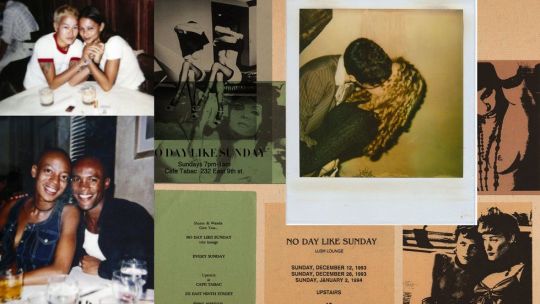
The Year Lesbians Were Chic
On any given Sunday in 1993, fresh from releasing her explosive "SEX" tome and the equally explicit album "Erotica," Madonna could be found at the chicest lesbian party at the hottest of restaurant-bars in the East Village. Flanked by gay it-girls like CK One model Jenny Shimizu or OG nepo baby socialite Ingrid Caseras, the pop star, in her prime, would ascend the winding stairs to the VIPs-only second floor and walk the runway between tables full of New York City's most beautiful women, who wouldn’t even pretend to hide their stares. Any given Sunday, Queen Latifah might be in the adjoining room, playing a round on the pink felt pool table and buying drinks for all the players, part-time model-DJ Sharee Nash playing a sensual mix of imported Euro acid-jazz and neo-soul; women buy cassettes to take home with them at the end of the night.A salon that ran from 1993 to 1995 at the model-owned celebrity hot spot, Café Tabac’s "No Day Like Sunday" — known colloquially as "Sundays at Café Tabac" — has been credited with being the birthplace of “lesbian chic.” A cultural moment christened by the media, lesbians' 15 minutes had to do with a convergence of social and political elements, but perhaps no physical space embodied it more than Sharee Nash and Wanda Acosta's famed fashion-forward party in the East Village. Owned by a male model with regulars like Naomi Campbell, Bono and Fran Lebowitz, Café Tabac was already a chic place to see and be seen for the fashion set, but Sundays were for the girls like designers and stylists (and ex-girlfriends) like Patricia Field and Rebecca Weinberg and rapper MC Lyte. A 1994 New Yorker profile of indie filmmakers Guinevere Turner and Rose Troche (also ex-girlfriends) fresh off their Sundance Jury win for their dyke film Go Fish were profiled "drinking Scotch and smoking Rothmans" one Sunday at Tabac, wherein Troche says, "you don't have to look straight or act straight." A New York Magazine item praised Tabac's crowd for being glamorous and "ethnically and sartorially diverse." The party was intended to be something private but different from the dyke dive bars Acosta had been accustomed to. At 28, the Nuyorican party girl divorced her husband and wanted to meet women but was struggling to find a place where she felt comfortable. "I was already feeling like I had been hiding this part of myself for so long," Acosta tells PAPER, "so to have to go down to this dark basement in the back of some space to meet women felt really claustrophobic. I wanted to see a place that was a more elevated, visible [space] that I could explore, getting dressed up and going out and seeing beautiful women."Acosta happened upon Nash at Alexander Smalls' hip Village soul food restaurant where models worked as hosts, among them some of Nash's girlfriends. One night in '93, Nash (a writer herself) sat reading Virginia Woolf's Orlando. "I guess that was her cue to think 'Maybe she's gay,'" Nash says. The two struck up a conversation and found themselves discussing lesbian nightlife, craving something "different.""Just for diversity — different energy, different music, different food, different looks and different people," Nash says. Having recently moved back to New York from Germany, Nash was DJing small spots and was tired of big clubs. There were some great options like The Clit Club at Bar Room 432 on Fridays, but New York was shifting into a dinner-and-drinks era where patrons would commandeer an event all night and let the party circulate around them. The idea of dinner was appealing for Nash, who says that, growing up in St. Louis, her family was big on Sunday meals. She describes the ideal Tabac night as dinner followed by "cocktails, running around, dancing, dessert, then dessert." The party started out as private – word-of-mouth and invite-only — which was part of the appeal. Some of the potentially closeted attendees appreciated the clandestine affair; rarely were photos taken in the pre-cell phone era. "We didn't invite the celebrities," Nash says. "They just found out and they just started showing up."With New York fashion and celebrity comes New York media, and the party started to pick up bits in the press, including the aforementioned New Yorker piece. Designer friends would create looks for Nash to wear as she worked the party, enabling her to connect adoring fans to the creator in the very same room. The salon only ran for two years, but the stories and symbolism of No Day Like Sundays has been so enduring that co-creator Wanda and filmmaker Karen B. Song have been working on a film documenting the women and time of Tabac, touching on what made it so special. "There was that performative aspect of it," Song says. "You would walk in that space and see what it was like to see the confidence in front of you, what that translates to." Acosta says Sundays at Tabac "allowed women to be able to come in and express themselves in a different way than they had been able to before.""I think before we were dressing and signifying each other through our dress codes," Acosta says. "In the early '90s, we started to be able to express ourselves as individuals."Several of the aforementioned women like Patricia Field, Jenny Shimizu and Guinevere Turner are interviewed for the Sundays at Café Tabac documentary, as well as other attendees such as award-winning author Jacqueline Woodson, gay critics Michael Musto and Hilton Als and butch icon Lea DeLaria, all reflecting on the weekly gathering set amongst a highly visible moment for lesbians and, more generally, queer women."We all loved just watching to see who was gonna come up the stairs — what they were wearing and who they were with, " Acosta says. "It was really a bit of voyeurism as well." Voyeurism looms large in lesbian chic, as lesbian visibility has always been a Xena-sized double-edged sword. Although lesbian chic has certainly achieved more visibility and acceptance for some lesbians, lesbians themselves weren't always in charge of the messaging. "Lesbian chic" was a tangible trend co-opted by the media looking for a sexy new flavor of the month, and, post-AIDS, gay women were finally on the menu.Madonna, for one, thrust sexual experimentation into the zeitgeist in the late '80s, first with a flirtatious and rumored relationship with Sandra Bernhard in tabloids and then late-night television. Together, they appeared on "The Late Show with David Letterman" in matching ACT Up uniforms (white T-shirts, denim jean shorts and Doc Martens), dropping New York lesbian dive The Cubbyhole into salacious conversation."She was an enfant terrible sometimes, but for the most part, I think everyone was like, 'Whoa – what's, what is she gonna do next?'" Song says of Madonna. "She was so at the prime – she was in the media eye and every time she was photographed or at a party or at a fashion show or whatever, shooting a music video, she always had a lesbian with her." After falling out with Bernhard (reportedly over Caseras), Madonna set her sights on k.d. lang, feigning a romantic or sexual relationship with the androgynous country-punk crooner and likening her handsome swagger to both her ex-husband Sean Penn and Elvis. (Later, lang would admit they shared a publicist and that the lesbian chic thing "probably benefitted" the both of them.)More than Madonna, lang played an integral role in the visibility of lesbians because, for one, she is one. lang's coming out on the cover of The Advocate in May 1992 followed the success of her sex bomb of a pop crossover album Ingenue, a Grammy-winning turn that was due, in part, to her hit devouring single "Constant Craving." Both the pop cultural and political landscapes were primed for lang to confirm that the seductive love songs on Ingenue were written about women, and she seemed to be rewarded for her outsiderness as opposed to being shunned by it, as she had in the country music realm. She was tired of staying in the closet and playing by as many rules as she could abide, and so her move into contemporary pop came with self-acceptance, a laissez-faire attitude and confident seduction in suits on stage and in interviews. Lang stirred something in people of all genders and sexual orientations. People were fascinated by her, unclear where or how to place her in their desires, but, well, craving more. Lang's effect was so palpable that she won a 1993 MTV Video Music Award for Best Female Pop Performance despite, as she remarked, "never getting played on MTV."Lang's coming out happened in the Clinton era, when the President and First Lady counted a few well-placed lesbians as friends and third-wave feminists were turning political actions into protests for lesbian visibility. The singer rode along the pop cultural push for lesbians to be recognized and represented and became a de facto poster girl. A now-famous New York Magazine cover from 1993 has the square-jawed singer gazing into the lens, brow angled in a saucy dare; all capital letters, all-white font: "LESBIAN CHIC" emblazoned across her velvet-clad cross-body arm, the subhead "The Bold Brave New World of Gay Women" literally resting on her shoulder. It wasn't just k.d., of course. In 1993, Melissa Etheridge came out and released her Grammy-winning Yes I Am, Lea DeLaria made dyke jokes on The Arsenio Hall Show and, by then, openly queer Sandra Bernhard had both a Playboy cover and a regular bisexual role on Roseanne. Tennis star Martina Navratilova had her dyke drama splashed all over The Washington Post. It was primarily white women being celebrated for their chicness, and that there were at least a handful of them being so visible meant only one thing to the media — lesbianism was a cool new trend that could be exploited for a hot minute.In August of '93, lang was being shaven and straddled by supermodel Cindy Crawford on the cover and in the pages of what is now an iconic issue of Vanity Fair. “I don’t know how to use femininity as a powerful tool. I use my sexuality, but I eliminate the gender from it," lang told Vanity Fair, saying that she's long felt a "social pressure to be beautiful, thin, stylish."Never before had a butch lesbian been celebrated, despite a long lineage, and while her Vanity Fair issue remains one of the most iconic covers ever, it wasn't long before butches were erased from the lesbian chic narrative in favor of something more desirable by men.At least the Vanity Fair piece was all about lang; the New York piece mentioned her briefly but primarily reported on the trend of openly gay women who have "transformed the lesbian image." Author Jeanie Russell Kasindorf reported that "the short-haired 'bulldyke' is still many Americans' idea of what a gay woman looks like. Now 'lipstick lesbians' and 'designer dykes' share the bar with the 'butch/femme' group; the downtown black leather crowd and women in Jones New York suits wander among them.'" In other words, anyone could be a lesbian, which made lesbians both visible and invisible at the same time.This new attention spawned skewed speculation from places like Playboy ("the secret to the craze is that Nineties-style lesbianism requires no commitment"), 20/20 and Geraldo Rivera; coffee table how-to guides on lesbian hair, dress and sex (primarily addressing a straight, curious audience) and fashion editorials posing glamorous women together in suggestive photos ripe with Sapphic subtext. It seemed there was a proliferation of lesbians out of nowhere — lesbian comedian Kate Clinton joked in a 1993 LA Times piece that lesbian chic is "in a lot of ways what lesbian separatism was, but with better PR."For women like Clinton who had been performing publicly out as a lesbian since the early ‘80s, the new fad of “lipstick lesbians” and “designer dykes” was alienating to the larger community. Some found it hypersexualizing while others found it neutering, forcing a recycled conversation about respectability politics and feminist principles that has and will continue to plague lesbians for as long as we live in a hetero-patriarchal, capitalist society. If we don't own our own narratives, then how can any of us know or agree upon what a lesbian is or should be? Mairead Sullivan, Associate Professor of Women's and Gender Studies at Loyola Marymount University and author of Lesbian Death, says 1993 was significant in that it "was the year 'lesbian' lost its political bite," at least to the consuming public."This is a moment when 'lesbian' is no longer politically associated with a militant radical feminism," Sullivan tells PAPER. "Lesbian chic arrives as a disidentification of feminism."The early '90s was removed enough from the '70s that lesbians were no longer associated with the militant radical feminism of their foremothers, instead acting in response to it. No longer operating out of separatism, women came to work with gay men and trans people during the AIDS epidemic, a new generation of lesbians and bisexual women developing and honing demonstration tactics, bringing newfound ways of being seen and heard into a new future of sex positivity.Media spectacle was one way to get attention. Sullivan points to the political work and televising of the 1993 March on Washington (where the action group the Lesbian Avengers held the first-ever Dyke March with 20,000 lesbians marching together) as part of what led heteronormative stalwarts like Newsweek to run cover stories on lesbians and "the limits of tolerance.""Some people are panicking about [lesbians] and the Newsweek article is doing this identification of it: 'Lesbians are all good trying to raise children, not fringe topless lesbians with their fists in the air,'" Sullivan says. No longer were lesbians seen as men-hating threats to the nuclear family if all they wanted was to be part of their own. The irony is that lesbian visibility could not have happened without the topless lesbians or their fists. It was these activists who forced the lavender menace conversation with NOW, seeking to be part of resourced feminism post-women's liberation, and in the '80s, despite feminist backlash, were huge parts of national AIDS organizations like Act UP and Queer Nation. Within these factions, lesbians were finding themselves, creating connections and empowering each other. Sullivan points out that 1993 was also the first year lesbians were ever counted in any official way as a demographic. When the FDA finally gave AIDS activists a seat the proverbial table in 1991, they brought lesbian breast cancer advocates with them, leading to an NIH-sponsored study on lesbian health and breast cancer. The results went across the AP Newswire and were published widely. "So it's across the national news, this declaration that there's a lesbian breast cancer epidemic, and that becomes a real way in which lesbian then becomes this very clear demarcated like demographic category, in which now there's like an impetus or maybe put differently like a structure to count lesbians that didn't really exist before," Sullivan says.Those numbers reflected a market for those courting untapped markets, and “lesbian” was now an identity that could be advertised to and capitalized on. After close to two decades as a music label for women's music, Olivia Records switched to a lesbian travel company for women in 1990, placing full-page ads in the newly launched glossy Deneuve (later Curve) magazine for trips like its historic, media-hyped sail to Lesbos in 1993. Alcohol companies and brands like Subaru took bets on catering to an untapped subculture with pink dollars to spend, affording gay and lesbian magazines spots on special interest shelves in big box bookstores.Joining Curve in 1992 was OUT magazine, the first glossy gay and lesbian lifestyle magazine that positioned itself as less political than The Advocate or similar news-centric LGBT publications. Spokesman Michael Kaminer told The New York Times that the magazine would "redefine what gay fashion is," adding, "Some people think that lesbian women wear only jeans and Birkenstocks." The pervasive dowdy lesbian stereotype was born out of 1970s separatist lesbians who eschewed capitalism and patriarchal beauty standards. But lesbians weren't an invention of the '70s any more than were the '90s. Pre-dating what is often considered the birth of modern lesbianism are several Sapphic heydays, including the 1920s Harlem Renaissance performers like Gladys Bentley and Ma Rainey and the Lost Generation of Gertrude Stein, Natalie Barney and Djuna Barnes. (In fact, the first use of the phrase "lesbian chic" was made by historian Lillian Faderman in her 1991 book Odd Girls and Twilight Lovers, in a chapter called "Lesbian Chic: Experimentation and Repression in the 1920s," borrowing a phrase from Djuna Barnes' 1928 Ladies Alamack.) One hundred years ago, lesbians were thriving in their own private artistic circles but still had to maintain a cloak of passing heterosexuality in the interest of their own safety. Every decade following had its own lesbian subcultures (from butch/femme in the 1950s to the respectability politics of the Daughters of Bilitis into the Gay Liberation of the late-'60s), but the proliferation of lesbian visibility that the '70s brought exploded notions of a monolithic sameness when the Sex Wars divided lesbians over things like porn, sex work and S&M into the '80s. When award-winning writer, publisher and sexpert Susie Bright went to work at the hotly contested lesbian erotic magazine On Our Backs in San Francisco in the '80s, she tells PAPER "being in the closet was still de rigor for lesbians and seemed to be just the province of a few well-placed gay men."Facing "real denigration exclusion and persecution by the conservative mainstream feminist movement," Bright and the sex workers who both posed for and published On Our Backs were told they were ruining the progress feminists had made by celebrating their bodies, their desires and their sex positivity in editorial spreads and articles as their answer to Playboy (they even had a butch pin-up of the month).On Our Backs published from 1984 to 2006, long outlasting lesbian chic's 15 minutes, which Bright credits "not just because of our sex appeal but because the charisma and the political vision of 'what if women's sexuality had nothing to do with virtue or decoration or her fertility?'""We strutted our stuff and we voiced our political point of view, and then years later in the nineties, this lesbian chic thing comes splashing across the mainstream press, and my first reaction was, without us, this wouldn't have happened, but I already hate it because it is a new kind of packaging of titillation for men and an accentuation of the femme to the exclusion of the butch," Bright said. (Radical Desire, a retrospective of On Our Backs and its historic women and trans photographers is available virtually from Cornell.)Part of the problem was not just that the idea of lesbians being cool for a moment was not just that it commodified lesbians as a consumable lifestyle, but it suggested lesbianism was something to put on temporarily, like a costume for a theme party. "Lesbian sexual power is not because you're skinny or petite or rich or have the perfect complexion or have a Gucci bag or friends in high places. It's not about 'Ha ha, I was a lesbian at a party for five minutes — it was incredible!'" She adds wryly: "If it stops them from killing us and taking our children and refusing to hire us and chasing us out of our homes and refusing to let us attend our family death beds — if that's what this is about, great, have your little lesbian chic moment."The reality of representation was not all positive: 1993 was the first year hate crimes against gays surpassed racially motivated attacks. The '90s in particular were record-breaking for lesbian murders — Talana Kreeger in 1990, Susan Pittmann and Christine Puckett in 1992, Sylvia Lugo in 1995, Roxanne Ellis and Michelle Abdill in 1995, Julie Williams and Lollie Winans in 1996 and Martha Oleman in 1997. Although not a lesbian, trans man Brandon Teena's murder also sent reverberations through the community. Simply seeing more depictions of gay women wasn't necessarily translating into acceptance or a promise of safety. In fact, it seemed being more visible made them more of a target, which has always been a conundrum for gender-nonconforming people. A media-sanctioned celebration of cisgender, able-bodied, middle-to-upper-class lesbians wasn't helpful to all lesbians, which begs the continual question: If that's the case, how could "lesbian chic" be good at all? What started as a celebration of k.d. lang as a masc-of-center cover model from Alberta, Canada was swiftly reconfigured into a fashion moment that inevitably leaned away from female masculinity and into the edgy but non-threatening "lipstick lesbian." Today, there seems to be a discrepancy on what lesbian chic is – A look? A red lip? A swagger? An identity? – and that adds to the confusion. Fashion expert Chelsea Fairless, co-creator of the popular Instagram account and podcast Every Outfit on Sex and the City, defines lesbian chic as a style that women have always and still wear today."It was kind of like the '90s version of Marlene Dietrich," Fairless tells PAPER. "It was about the men's wear, but with full lipstick heels, in many instances, gelled hair."Fairless designed a T-shirt for (ex-girlfriend) butch comic-actor and Tabac regular Lea DeLaria that bemoaned the moment that she sold at public appearances, reading: "I survived lesbian chic," with 'lesbian chic' written in red lipstick. "Lea is a butch woman of a certain age, and that shirt is speaking to her fans that had a similar experience or a similar reaction to lesbian chic at the time that it was happening," Fairless said. She points to an OUT cover DeLaria shot in 1998 that DeLaria posted for a throwback Thursday not long ago, with DeLaria writing in the caption, "Why the fuck am I wearing lipstick? And grabbing my tit?!" That it was a gay magazine and six years after lesbian chic was au courant suggested that something had been lost in translation.DeLaria was not the lone butch at Tabac, and Nash is quick to point out that the party was not solely catering to high-femme fashion models and their famous friends. "There were celebrities in there, but we had friends who were construction workers who build skyscrapers. I think those women are equally badass," Nash says. "There we had school teachers, professors. We wanted to make it women from all walks of life. It wasn't just exclusive to just pretty models."Nationally, the publicity offered helped to establish lesbians as a demographic to be counted and catered to, but in many ways clung to the preferred idea of an acceptable type of lesbian. (DeLaria, for one, played a lecherous butch coming onto Goldie Hawn in the 1996 film "The First Wives Club" in an otherwise comical scene at a hip lesbian bar. She's played several more stereotypical roles of the same ilk since.) But there's no question Ellen DeGeneres couldn't have come out on primetime television without kd lang and, arguably, lesbian chic having given networks enough proof that there could be a monetary benefit from teasing something so taboo. (Lang, of course, appeared in the episode.)The best-selling musical tour of the late-'90s, the all-women's Lilith Fair, had what Sullivan can attest to from personal experience, "lesbian feminist aesthetics." It's when the 'chic' replaces feminism that things get cloudy. "As the mainstream media picks up and tries to narrate lesbian chic, it has this way of basically being like 'Don't worry, lesbians aren't as threatening as they seem because they're like all just good girls!'" Sullivan says."Before there was lesbian chic there was lesbian invisibility," Bright said in a 1997 interview. "I'd rather be visible. I know how much I felt like I suffered when the media only discussed the gay community in terms of gay men. But lesbian chic is just another signal of exploitation, like when feminists were portrayed only as bra-burners."New York Magazine, the very publication that had deemed lesbians chic in the first place, declared it past its expiration date by 1995 in a piece about Sundays at Café Tabac. Things were coming to an end. The piece quoted a "sardonic regular" quipping, "There's nothing to do but gawk at all the beautiful people."In 1995, lang's Ingenue follow-up All You Can Eat didn't replicate the former's success, and Madonna was looking to soften her image with her post-Erotica album, Bedtime Stories, and seemed to have tired of lesbians as an accessory. Tabac had become so big that Acosta and Nash (ex-girlfriends) had both floors and lines out the door on four-day weekends. The venue's vibe was changing, following the new New York City trend for lounges, thrift store couches replacing tables and doing away with dinner altogether."It totally changed the space," Acosta said. "It totally changed the party." Nash said she knew that Sundays at Café Tabac were over when one night, Kate Moss came up the steps, followed by Johnny Depp instead of a gang of supermodels. "People were like 'Johnny Depp is here,'" Nash recalls. "I'm like 'Yeah, pretty much a wrap for us. It's over.'"Nash and Acosta both went on to throw other successful parties, but their Sundays at Café Tabac have remained a particularly positive experience for many women who found it a place to see and be seen. Nothing has resonated quite like those nights of lesbian du jour. The struggle now is, like most independent lesbian efforts, the documentary about Sundays is underfunded and the filmmakers are looking for support to bring the project to fruition. (Donations can be made directly to Café Tabac on their website.) Lesbians continue to have their chic fashion moments – brands like The Row, Celine and Louis Vuitton have borrowed from OGs like openly lesbian designer Jil Sander, putting models in boxy baggy suits. "Dressing like a lesbian" is still in or out depending largely on what celebrities are wearing anything akin to menswear. Without stylist Patricia Field, Sex and the City would not have been the fashion inspiration that it was, with every single character on the show having lesbian chic moments of their own. (Fairless points to the 1997 episode where Charlotte befriends a group of art world power lesbians who want her to commit, not just play the part. When Charlotte says she loves female energy but prefers men, one power lesbian tells her, "Sweetheart, that's all very nice. But if you're not going to eat pussy, you're not a dyke.") Without the success of Sex and the City, there wouldn't be The L Word, a show that was essentially lesbian chic in aspiration and action. (Its new iteration Generation Q is as much a reaction to the original as lesbian chic was to second-wave lesbians of the '70s.)Nowadays, Brandi Carlile struts in k.d. lang's heeled boots and designer and creative director Jenna Lyons is joining Martina Navritova's wife as an openly gay Real Housewife as she joins the New York cast this coming season. Some of the most famous and well-regarded lesbians are anchoring Good Morning America, hosting the Oscars and being named "Couture Week's Best Dressed Couple" by Vogue. Lesbian bars may be in flux, but queer nightlife and the intentional creation of inclusive spaces is consistently evolving. And despite clickbait proclamations that 30 years after being chic, lesbians are so over, that's just not the reality. Are lesbians ever really done processing?Sullivan says a lot of the conversations happening at the time of lesbian chic in lesbian and queer communities but also nationally are very mirrored right now. "There are attempts from mainstream media to soften 'lesbian,'" Sullivan says, "but I actually think that the response from the lesbian community was a very strong engagement with lesbian politics and dyke politics – and I think we see that coming back in full force right now." Just like Madonna.Photos courtesy of Wanda Acosta and Karen Song
https://www.papermag.com/cafe-tabac-lesbian-chic-2659588433.html
3 notes
·
View notes
Text
New Audio: Draag Shares Buzzing and Nostalgia-Inducing "Orb weaver"
New Audio: Draag Shares Buzzing and Nostalgia-Inducing "Orb weaver"
@draagsadpeople @grandstandhq @tagabowPHL
Los Angeles-based musician Adrian Acosta was trained as a mariachi singer by his father, an established norteño musician, but after finding his older brother’s electric guitar, Acosta quickly got into indie rock and shoegaze. Growing up in Los Angeles’ San Fernando Valley, there wasn’t much for kids to do; but Acosta got involved in the local DIY punk scene as a preteen. Backyard shows happened…

View On WordPress
#Draag#Draag Actually the quiet is nice#Draag Clara Luz EP#Draag Dark Fire Heresy#Draag Nontoxic Process EP#Julia&039;s War Recordings#Los Angeles CA#New Audio#New Single#Orb weaver#shoegaze#Single Review#Single Review: Orb weaver#They Are Gutting A Body of Water#women who kick ass
0 notes
Text
Cebras, Lobas y Colets tomaron Live Era

El regreso de Mujer Cebra a Montevideo fue motivo de una verdadera fiesta del under
Por Ginny Lupin
Fotos Gino Bomba
Con el antecedente del Festival Nuevo Día en octubre del año pasado y frente al innegable crecimiento (y acercamiento) de la escena musical underground rioplatense; era esperable que el regreso de Mujer Cebra sacudiera la escena local. Sin embargo, la realidad superó las expectativas, marcando la noche del sábado como un hito para el post-pandemia a ambos lados del charco.

¿Por qué? En primer lugar, es practicamente imposible esperar que un espectáculo convocado antes de que baje el sol en Montevideo, tenga una fila de jóvenes dando vuelta a la esquina de Rio Branco em espera de la apertura de puertas de Live Era. Eso acá no pasa, o al menos no pasaba hasta que Samuel Acosta y los Colets anunciaron que tocaban a las 19.30, como encargados de abrir esta gran noche de nuevo rock que reunía también a Niña Lobo y Mujer Cebra. O al menos no hasta que Samuel comenzara a eyectar melodías queribles, desde el interior de su cuarto desordenado o las profundidades de sus raíces venezolanas, guardándose al público local en el bolsillo con su imparable conquista de escenarios en 2023.
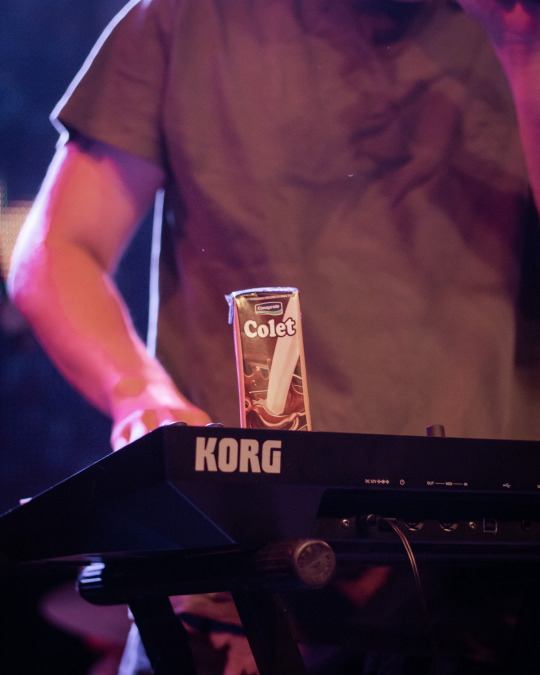

Lo cierto es que, cuando sonaron los primeros acordes de la banda sobre las 20 horas, el galpón de la calle Uruguay gozaba de buena convocatoria, mientras las remeras de Cebra se vendían como pan caliente. La hinchada Colet estuvo presente y representó, revoleando el ya clásico muñeco de Shrek por los aires y cantando cada palabra de "No falta mucho para que pase" como la oda a la escena que es. Como bonus, presentó "Un Montón", nuevo single del disco que viene cocinando.
Lo que Samuel anticipó en sus redes sociales durante el último mes se hizo evidente: la banda tenía ensayo, garra y conexión.Los invitados, Fehnicia en la trompeta y Rodrigo Gerner (Le Desgaire/Los Mermeladah) en guitarra, sólo contribuyeron a la energía construída, aportano al combo de ingredientes que resultaron en un set por lo alto, incluso con algo de gusto a poco cuando llegó a su fin.
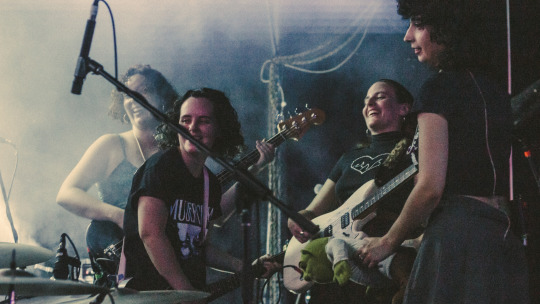
Niña Lobo
Las Niña Lobo llegaron a Live Era luego de su paso por el festival 300 años de Montevideo, frente a una audiencia totalmente diferente. Para el quinteto, esta fecha fue la oportunidad de conectar con su público nuevamente en un lugar chico, con olor a galpón y sin censura al agite. La chance de tocar temas más "rotos" y dejar que las guitarras suenen más fuerte.


Con una setlist que repasó su disco Lo Que Duró la Vida de Alguien (2021) y los EP Niña Lobo y Migrar, ambos de 2019; la banda movilizó al creciente público, calentando lentamente la pista. "¿Se pueden acercar, porfi?", pidió Camila Bustillo, guitarrista, arengando a la gente a ocupar el reducido espacio despejado frente al escenario.
Con "Jaime R.", "Dentro" y "Balada" como los temas más coreados, las lobas desataron baile y proto-pogo a montones; representando a la camada indie surgida poco antes de la pandemia, que sirvió de puntapié e inspiración para muchas de las bandas convocantes del momento.


De vivir tan bien
Después de escuchar sus dos discos más de lo humanamente posible y tener la oportunidad de verlos en vivo en tres oportunidades (incluyendo el sábado), creo estar un paso más cerca de descrifrar la fórmula que convirtió a Mujer Cebra en la principal banda de la generación post-pandemia argentina.
Con los primeros acordes de "Y no me digan nada", la ronda de pogo descenfrenado hacía un trabajo coordinado para sortear la columna en el medio de Live Era, entre saltos, baile y absoluta euforia. No bastó más que eso, sólo tres acordes para convertir a Live Era en el epicentro de toda una escena. Y es ahí donde reside uno de los principales diferenciales de Cebra, no necesitan hablar para generar una respuesta en el público. Y no es que hablar sea malo, pero cuando la música habla por si sola y su mensaje inspira saltos, sonrisas, cuellos venciendo ritmicamente los limites de la gravedad y hasta alguna lágrima, ese sonido tiene algo especial.
La lista siguió recorriendo éxitos de Clase B, el disco que presentaban: "El Veneno", "Nuevos Miedos", "Fantasma", "Otoño Imperdonable" y "Nadie Va a Decidir por Vos" se cruzaron con los ya clásicos del disco debut, "De Peliculas" y "XXYY"; apenas interrumpidos por algún escueto "gracias" en voz de Santiago Piedra.
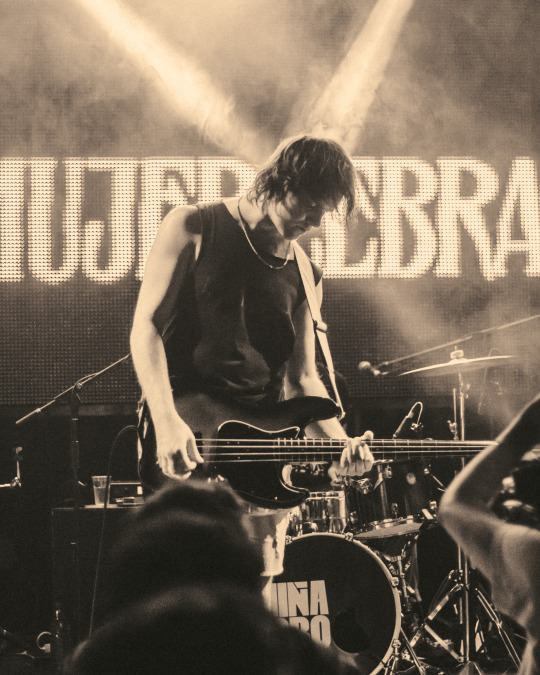

En sintonía con la manija colectiva, Gonzalo "Gordo" Muhape no paraba de moverse. Prendido fuego, recorría el escenario, saltando y doblándose sobre si mismo. El público lo seguía extasiado, replicando su entusiasmo con rondas de pogo que marean.
Otro factor clave del éxito Cebra: el Gordo transforma el bajo en lo que la canción necesita. Junto a Pato Garcia en la batería, conforman una base rítmica sólida, tan sólida que te pasa por encima. Un relojito, de bajo grave, gordo (el chiste es inevitable) y arrollador; que también es melodía y juegos imposibles que revelan una formación en la guitarra. El instrumento se hace manteca bajo la púa del Gordo y rellena espacios imperceptibles con pura identidad Mujer Cebra. Es eso que hace vibrar el piso y empuja a los pies a despegarse para saltar.
La voz de un movimiento
En "El Fuego es para Quemar" los pogueros tuvieron un mínimo descanso, para dejar que la voz de Santiago llenara el espacio sin distracciones. El tercer elemento que garantiza una trascendencia de Mujer Cebra en el tiempo y el espacio es justamente la voz, de una identidad tan única que es posible reconocer a la banda con los ojos cerrados; algo que no pasa con las voces del género, no con una banda que tiene seis años, dos discos y algunos kilómetros girados en el Cono Sur. No es pavada lograr un sello tan distintivo, más cuando el post punk, shoegaze y derivados se han popularizado tanto que muchas bandas pecan, en su talento y destaque, en sonar un poquito parecido a otras. Pero Cebra no.


Todos estos factores confluyen en noches como la del sábado, donde una propuesta musical de nivel genera una respuesta particularmente expansiva dentro de un público under. Quizás por eso hay que tener en cuenta, como causa o consecuencia, el elemento emocional.
Suena Cebra y los amigos se abrazan, porque es la banda sonora de una adultez en la que cayeron de golpe, despues de años de encierro. Si la salida al mundo después de una pandemia que les robó un pedazo de adolescencia fue al ritmo del disco homónimo, ¿cómo no van a generar un sentido de pertenencia con la banda?
Los no-tan-chicos asentimos con cada golpe de bombo, intercamvbiando miradas cómplices. Para nosotros, Cebra es la certeza de que esa sentencia que flota hace décadas sobre nuestras cabezas diciendo "el rock murió", no es más que un titular amarillista. Es la garantía de que el rock vive, se transforma y se potencia cuando lo tocan estos tres.
Esa emotividad es la que hace pasar por alto la rotura de una cuerda y también la que canta "Olé olé olé olé Mujer Cebra" todo pulmón. El público es (fácil) el 40% de un buen espectáculo y el sábado pasaron la prueba con honores, sabiendo aprovechar las variaciones que hacen de cada tema en vivo una experiencia nueva.

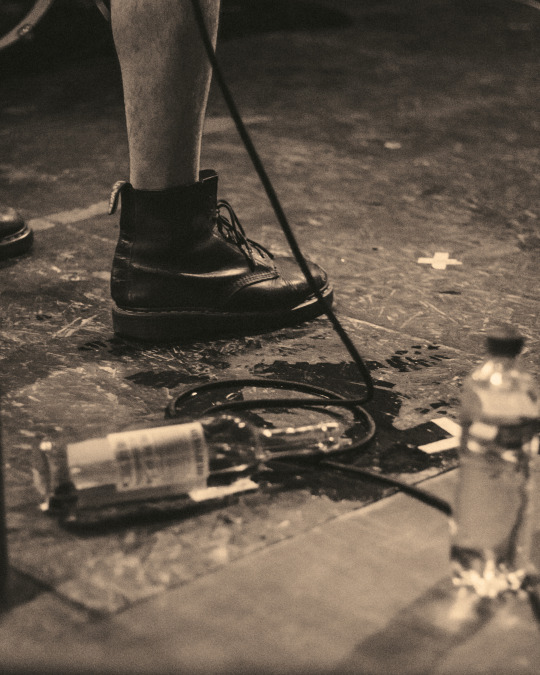
El repertorio elegido fue perfecto. Tal y como habían adelantado en Arde Radio, "Desaparecer" llegó a lista después de ser exigido en Córdoba y fue recibido con agite a la altura, en un final que llegó demasiado rápido. "Donde Termina el Silencio" como bis aplacó un poco la ansiedad de estar pidiendo el regreso de Mujer Cebra a Montevideo antes incluso de que bajaran del escenario. "Pronto" fue la mejor respuesta que pudimos obtener.
Párrafo aparte merece "No te Duermas", agregada a la lista con marcador negro a último momento y presentada con dedicatoria. Un largo tiempo de este lado de los recitales me ha enseñado que los buenos gestos en esta profesión hay que agradecerlos y a las buenas bandas hay que aplaudirlas, destacarlas y analizarlas con el respeto y el reconocimiento que merecen. Y no, siendo objetiva en mi subjetividad, no creo que nunca vaya a cansarme de ver a Mujer Cebra. Ojalá se repita mil veces.
#cobertura#mujer cebra#niña lobo#samuel acosta#under#montevideo#uruguay#clase b#ginny#gino#ardeportal
0 notes
Text
open to ? all !
muse ? alexander, queer, 28-35 !
connection ? anything throw it @ me !

❝ and this is my fault how ? you knew what you were getting into when you met me. ❞
#⟨ ♡ * 𝒔𝒑𝒆𝒂𝒌𝒔 . ⟩ ; alexander acosta#indie rp#indie oc rp#indie bi rp#⟨ ♡ * 𝒔𝒑𝒆𝒂𝒌𝒔 . ⟩ ; open starter#just fyi he is an extremely traumatized hitman so reading his bio b4 interacting would b awesomee
5 notes
·
View notes
Text
A-T-3 240 Death Mix
Have you watched Omar Acosta's new documentary Mixtape? It explores the role of the mixtape has had in the development and circulation of hip hop music. I was tempted to turn it off because the start of it is a mess, images and stories from one era clash with music from another. Gratefully the film eventually sorts itself out into more cohesive narrative, party tapes, dj mixtapes, freestyles from guests, exclusives, new artists essentially releasing indie albums to get known on the street, the crackdown by the law followed by brands and major labels eating mixtapes up and shitting them out. The interviewees the documentary makers manage to get is impressive, a lot of the names off the mixtape wishlist are there. Mr. Magic's Rap Attack gets written out of history in favour of rival Kool DJ Red Alert. Red Alert made early Dj mixtapes which is useful when you're telling the story of hip hop mixtapes, he also fostered the Universal Zulu Nation
Which brings me, again, to the gaping hole in the documentary Afrika Bambaataa. Arguably the most notorious of all the early party tapes is Afrika Bambaataa's Death Mix. It was recorded at a Zulu Nation night at James Monroe High School in the Bronx in 1980 (some say 1979.) Mixtape the documentary goes to great efforts to get across how popular tapes were repeatedly copied and distributed. The sound quality of Death Mix is awful because the record was cut from a fourth or fifth generation cassette copy. This hasn't detoured fans of hip hop because at the time when Sugar Hill Gang released their disco rap record Rappers Delight here we have an authentic snapshot of hip hop as it was performed live. Other performers here Dj Jazzy Jay and Soul Sonic/Cosmic Force Mc's are unfairly drawn under the shadow cast over Bam's reputation. Of course the allegations against Bambaataa are indefensible and but it's curious how interviewees on the Mixtape documentary openly boasts about violence, threats of murder, theft, drug dealing... hip hop culture is far from wholesome - these are all part of the game, peodphilia and sex trafficking are not part of the game (but it kind of is.) Hip hop also has a serious problem with misogyny, apparently this part of the game too as astonishingly convicted rapist Mike Tyson is brought out all through the documentary, a new civil lawsuit was filled in January against Tyson accusing him of rape
The record of the nth generation tape of Death Mix was released by Paul Winley Records in 1983. Another story Mixtape tells is one of shiesty behaviour, this is how Death Mix got onto record. Sweet Tee's father Paul Winley had recorded Zulu Nation Throwdown by Afrika Bambaataa and Cosmic Force in 1980 but Bam wasn't happy with Paul Winley's decision to overdub Harlem Underground Band onto their track (so it sounded more like something on Sugar Hill or Enjoy.) Zulu Nation Throwdown was popular with New Wave audiences in New York so Throwdown 2 was scheduled, sessions weren't going to Bam's liking so he parted company with Paul Winley. Death Mix was released after all this had happened without Bambaataa's consent - but Bam appears to care very little for consent
The final Judas kiss Mixtape gives us is it reveals that hip hop (especially American hip hop) hasn't had any new ideas in a very long time
youtube
#1983#afrika bambaataa#jazzy jay#red alert#hip hop#live#soul sonic force#bronx#new york#usa#80s music#Youtube
0 notes